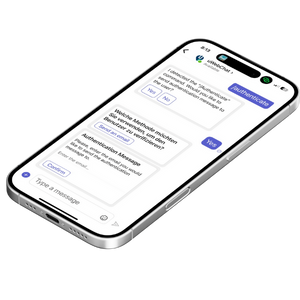uWebChat announces new Visitor Authentication Feature
Excited to announce the launch of Visitor Authentication, allowing chat agents to verify the identity of visitors via email or SMS.
uWebChat has launched a security-focused capability allowing chat agents to verify visitor identities through email or SMS authentication before handling sensitive interactions. This feature ensures authenticated communication and protects both your business and your customers.
How It Works
The Visitor Authentication system enables agents to send verification codes via email or text message. The process is simple: the agent initiates authentication, the visitor receives a unique code through their chosen method, they enter the code to confirm their identity, and the authenticated chat session continues with verified identity.
Step-by-Step Process
When an agent needs to verify a visitor, they type /authenticate in the chat. The visitor then selects their preferred verification method (email or SMS) and receives a secure 4-digit code. Once the visitor enters this code correctly, the agent knows they're communicating with the verified individual.
Enhanced Security Benefits
This feature protects sensitive information by limiting access to verified users. It demonstrates your commitment to customer security, works seamlessly within existing uWebChat setups, and provides a straightforward process for both agents and visitors.
Use Cases
Visitor authentication is essential for customer support discussions involving account information, sales inquiry verification to reduce fraudulent leads, and account management changes requiring identity confirmation. Any time sensitive information needs to be shared, authentication ensures you're speaking with the right person.
Additional Security Features
uWebChat also includes visitor banning, country blocklists, and integrates with Microsoft Graph for OneDrive file management. Importantly, uWebChat does not store conversation data on its servers—all data remains within your Microsoft 365 environment.
Key Features
